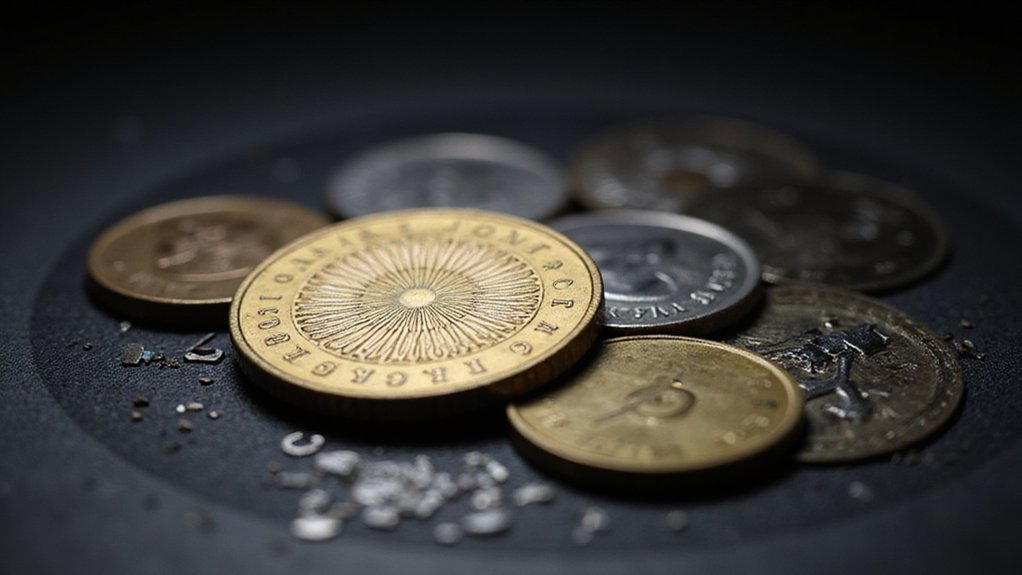The cashless revolution has found an unlikely vanguard in crypto cards, which are systematically dismantling traditional banks‘ dominance over Europe’s micro-payment ecosystem—one €5 coffee purchase at a time. With 45% of crypto card transactions falling under €10, these digital payment instruments are conquering territory that cash has held for centuries, transforming how Europeans approach their most mundane financial interactions.
The numbers reveal a fascinating behavioral shift: crypto card users average €23.7 per transaction compared to traditional bank cards’ €33.6, suggesting a deliberate focus on smaller, more frequent purchases. This micro-spending revolution encompasses everything from morning newspapers to transit tickets, with groceries commanding 59% of daily usage and dining claiming another 19%. The irony is palpable—digital assets once dismissed as speculative instruments now facilitate the most prosaic elements of European commerce.
Yesterday’s speculative digital tokens have become today’s mundane grocery payment method—a transformation traditional finance never saw coming.
Perhaps most tellingly, 40% of crypto card transactions occur online, nearly doubling the eurozone’s 21% average for conventional cards. This digital-first approach reflects not just technological preference but a fundamental reimagining of payment behavior. Users demonstrate remarkable comfort deploying blockchain-based assets for trivial purchases, a psychological barrier that traditional finance assumed would prove insurmountable.
Stablecoins drive 73% of these transactions, revealing sophisticated risk management among everyday users who embrace crypto’s convenience while avoiding volatility’s inconvenience. Bitcoin, Ethereum, Solana, and Litecoin maintain presence but defer to their stable-value cousins for quotidian spending—a pragmatic compromise that traditional banks failed to anticipate. Beyond payment processing, the same crypto assets fuel investment activities where users can engage in futures trading through major platforms, demonstrating the versatile nature of these digital currencies across both commerce and financial markets.
The 15% surge in new crypto card subscriptions throughout 2025 signals more than mere adoption; it represents European consumers’ growing indifference to traditional banking infrastructure for small-value transactions. Retailers increasingly accommodate these payment methods, recognizing that resistance to crypto cards means forfeiting a rapidly expanding customer segment. This shift particularly resonates with tech-savvy populations who view these digital-first alternatives as natural extensions of their technological preferences.
Traditional banks now confront an uncomfortable reality: their centuries-old stranglehold on micro-payments faces genuine disruption from decentralized alternatives offering superior speed, security, and user experience.
The question isn’t whether crypto cards will continue expanding their European footprint, but rather how quickly conventional financial institutions can adapt to this new competitive landscape where their smallest transactions—long considered too trivial for disruption—prove most vulnerable to technological displacement.









